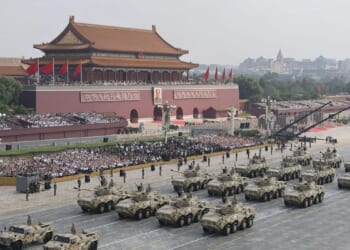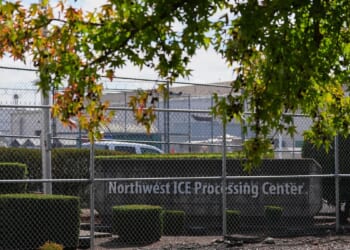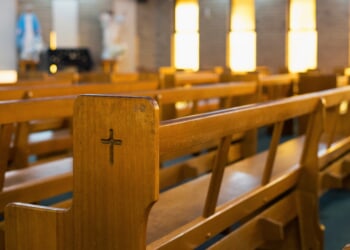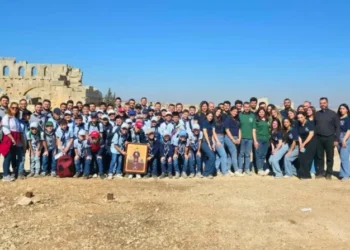Much to the chagrin of those suffering from Trump Derangement Syndrome, the U.S. Interior Department (DOI) announced plans this week to reopen part of the Arctic National Wildlife Reserve (ANWR) to oil and gas leasing in the coming months.
In a notice published on Oct. 23, DOI says the move fulfills directions from Congress in both the 2017 Trump Tax Cuts bill and this year’s One Big Beautiful Bill Act signed into law by President Donald Trump on July 4. It also complies with Trump’s Day 1 executive order requiring DOI to rescind the 2021 order by Joe Biden halting any lease sales targeting this same slice of ANWR’s vast reserve.
The formations beneath ANWR have long been known to contain massive reserves of crude, since the U.S. Geological Survey conducted an initial resource estimate during the Reagan Administration. The resource estimate was most recently updated by the Clinton administration in 1998, gauging the mid-range of the potential recoverable resource to be around 8 billion barrels of crude, using then-existing technologies. With technology having advanced immeasurably across the intervening 27 years, there is no question another update would yield a far larger estimate. (RELATED: Alaska Natives Cheer As Trump Admin Moves To Unleash Energy Biden Tried To Stifle)
Any way you look at it, that’s a lot of oil, and the move to ANWR represents the keeping of yet another promise that candidate Trump made repeatedly during his 2024 presidential run. Promises made, promises met.
Now, the question becomes, which, if any, of the major oil companies will show an interest in bidding on the leases in trying to drill in what is without question one of America’s most pristine and sensitive ecological regions? The answer to that question is far from clear.
ANWR, and whether to drill for oil there, has played the role of controversial political football for almost half a century now, since the opening of the Trans-Alaska Pipeline (TAP) made it possible to transport crude oil produced from Alaska’s north slope south to market. Early on, companies with familiar names like BP, ConocoPhillips, and ExxonMobil, who partnered in the pioneering exploration at Prudhoe Bay, showed a great deal of interest in making the huge investments required to unlock such vast reserves of oil to meet the world’s energy needs.
But interest from those and other companies has faded over the years amid the rise of the climate alarm movement and as repeated efforts to convince policymakers and courts to permit exploration there ultimately failed. Today, it is an open question where the bids would come from, even if DOI does hold the lease sale or sales contemplated in this week’s notice.
It’s key to note here that, in addition to the ANWR reopening, that notice also includes a solicitation for interested companies to nominate acreage for leasing in the National Petroleum Reserve in Alaska (NPR-A) in a lease sale contemplated to take place this winter. Located several hundred miles west of ANWR on the North Slope, it seems likely that DOI will receive a positive response to this solicitation since drilling in NPR-A has never generated the same kind of ferocious pushback from regulators, courts, and activists seem to reserve for ANWR.
In addition to the risk of billions of dollars in capital that would have to be invested to drill for oil in ANWR and build the pipeline infrastructure required to move it hundreds of miles to the TAP, companies would also have to endure risks to reputation and litigation that would inevitably arise. Those risks would also carry a negative value worth billions.
Companies like ExxonMobil, BP, ConocoPhillips and others are faced every year with a wide variety of choices about where to best risk their limited capital budgets. While the billions of barrels of oil beneath ANWR present a huge potential prize for those willing to assume the risks, the reality is that billions of barrels also remain to be produced in far less risky regions like the Permian Basin, the Gulf of America, and at Exxon’s massive Stabroek play offshore Guyana.
ANWR was set aside to preserve one of America’s most unique and pristine wildlife and wilderness areas. President Trump can build it in ANWR, but there is no guarantee anyone will come.
David Blackmon is an energy writer and consultant based in Texas. He spent 40 years in the oil and gas business, where he specialized in public policy and communications.
The views and opinions expressed in this commentary are those of the author and do not reflect the official position of the Daily Caller News Foundation.
All content created by the Daily Caller News Foundation, an independent and nonpartisan newswire service, is available without charge to any legitimate news publisher that can provide a large audience. All republished articles must include our logo, our reporter’s byline and their DCNF affiliation. For any questions about our guidelines or partnering with us, please contact licensing@dailycallernewsfoundation.org.

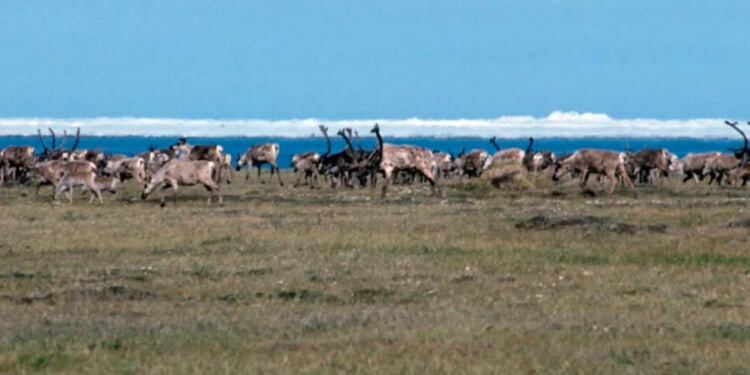
![Scott Bessent Explains The Big Picture Everyone is Missing During the Shutdown [WATCH]](https://www.right2024.com/wp-content/uploads/2025/11/Scott-Bessent-Explains-The-Big-Picture-Everyone-is-Missing-During-350x250.jpg)


